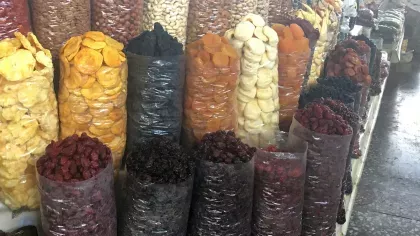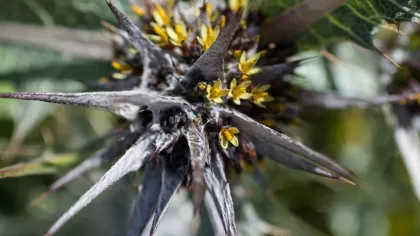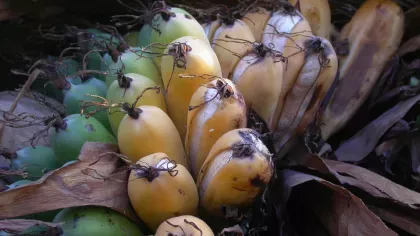7 November 2019
Wild relatives crossing continents
Rice seeds have made it from the challenging forests and plains of Nepal to the rolling High Weald of the Millennium Seed Bank in West Sussex.

Rice (Oryza sp.) is one of the most important crops in Nepal. Not only is it critical to the diet of Nepalese people, but the income from cultivation is crucial for livelihoods. With climate change expected to damage the agricultural production system, having crops that can show resilience to these impacts has never been more important.
As part of the Adapting agriculture to climate change (Crop Wild Relatives) Project, which is run in partnership with the Global Crop Diversity Trust, Kew project coordinator Chris Cockel went out to visit our partners in Nepal to help collect wild relatives of rice and understand the challenges of collecting in one of the highest countries in the world.
Rice: A staple
Rice farming accounts for approximately 50 per cent of the total agricultural area and production in Nepal.
However, production has not kept up with demand due to frequent extreme weather events that have hit the country, the effects of the tragic 2015 earthquake, and rapid population growth. This has led to Nepal importing around US$200 million worth of rice every year.
Wild relatives provide one solution to this as they are a source of valuable and diverse genetic traits that could be bred into domesticated crops to give them pest and disease resistance and the ability to withstand harsh environmental conditions.
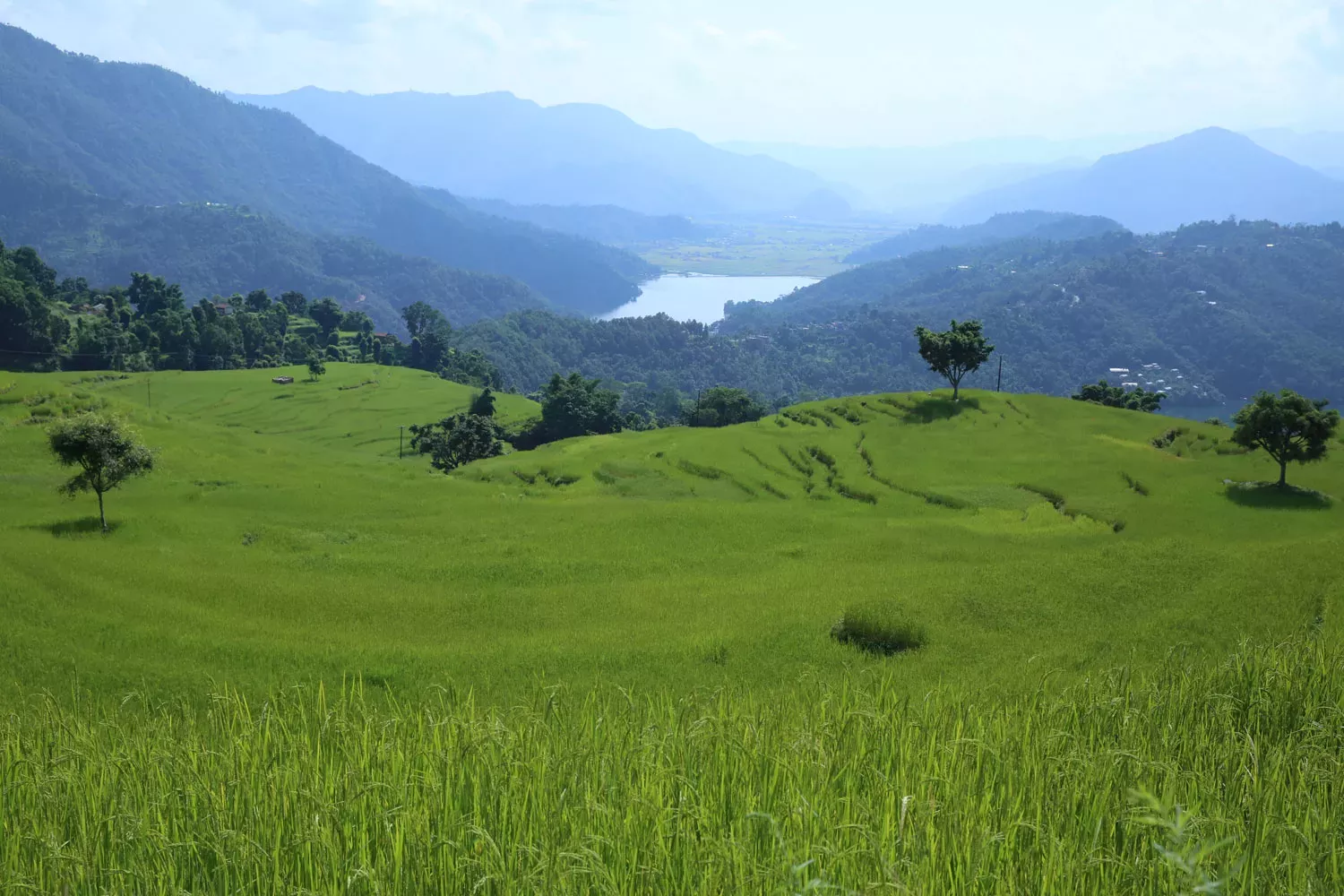
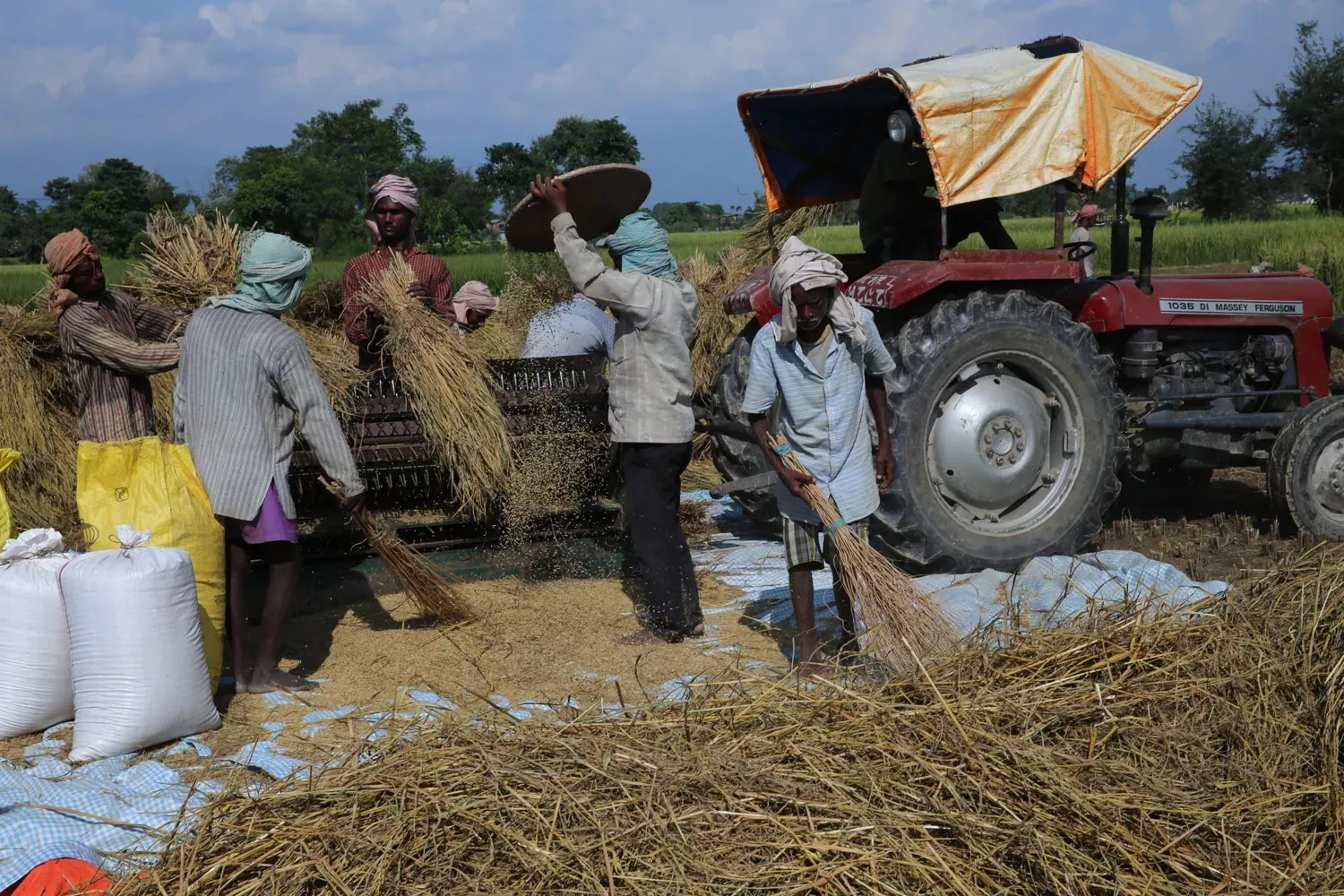
Geographically diverse
From the highest heights of Mount Everest at 8,848m in the north, to the fertile lowland plains of the Ganges River in the south at just 70m above sea-level, Nepal’s dramatic altitudinal variation creates a biodiversity hotspot containing six floristic regions.
In fact, despite being smaller than the US state of Illinois, an estimated 300 plants are endemic to Nepal.
A challenging collection
Collecting seeds of crop wild relative species is not as easy as it may seem.
We met our partners from the Nepal Agricultural Research Council (NARC) and local guides on the banks of the East Rapti river along the northern border of Chitwan National Park.
A short, but adventurous, canoe ride in hollowed out tree trunks took us to the start of the trek through the territory of the endangered Bengal tiger. As leeches dropped from tree branches, we trekked on behind an elephant.
We waded through the eight-foot-tall elephant grass (Saccharum ravennae L.), before reaching a large stream with no obvious place to cross and no tree-trunk bridge to help. Fortunately, an elephant could help us cross and reach our collection site.
Our Nepalese partners have made treacherous treks like this several times to successfully obtain eight Oryza collections. Approximately one third of the seeds that have been collected are kept in the genebank in Nepal and the further two thirds have been sent on to our Millennium Seed Bank.
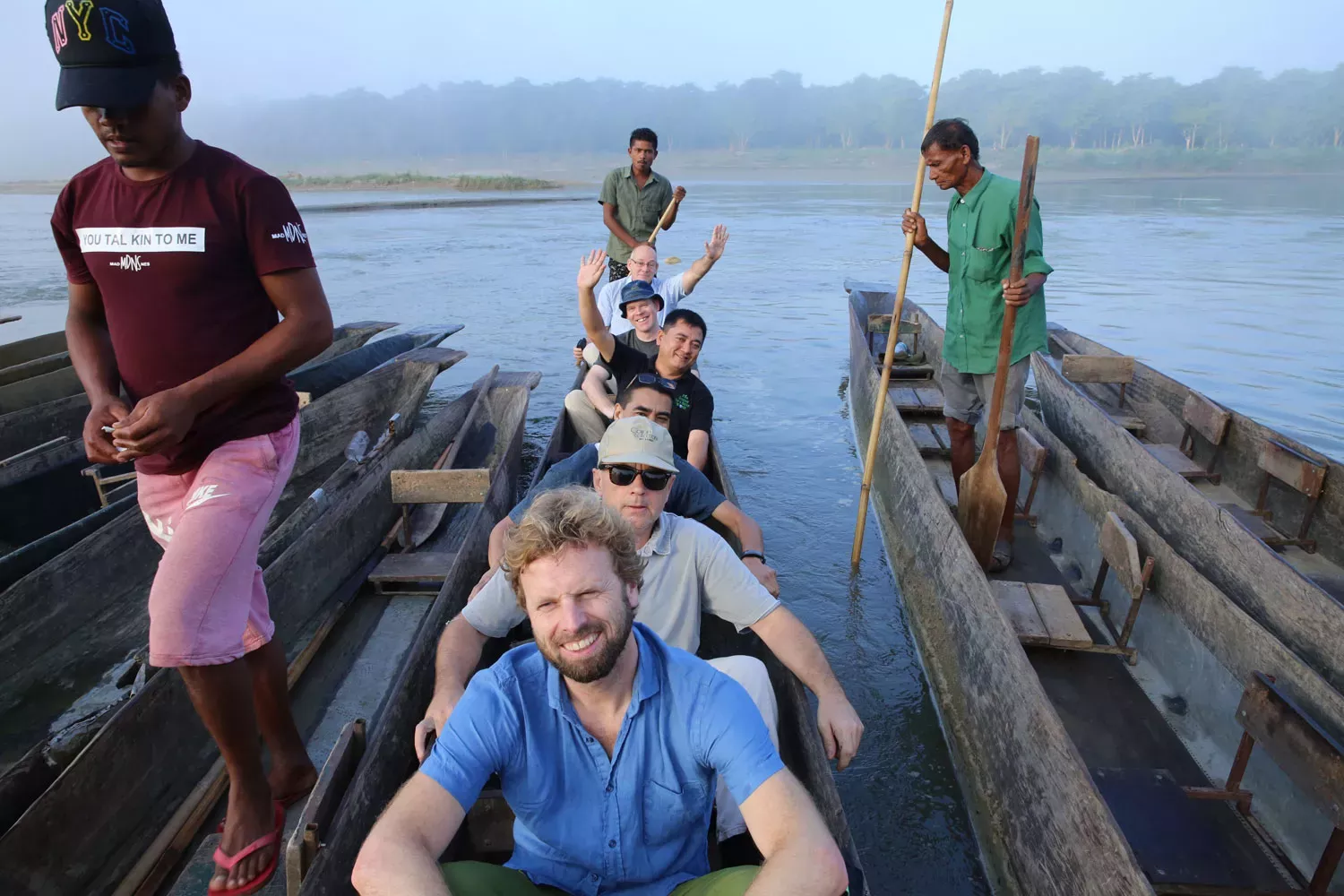
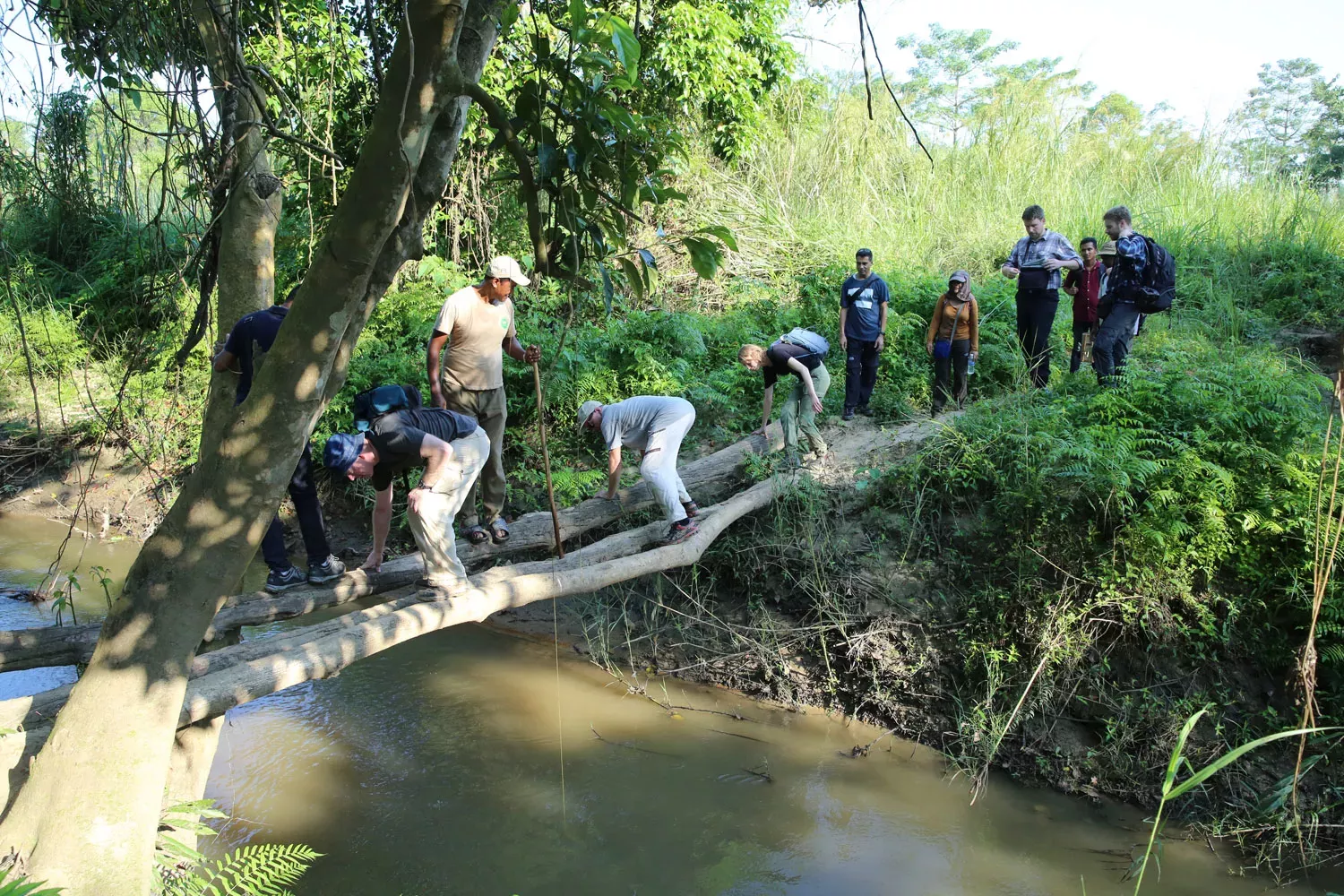
Pre-breeding for resilient crops
The wild rice seeds that were sent to the Millennium Seed Bank have, after extensive health checks and testing, just been shipped to the International Rice Research Institute (IRRI) in the Philippines.
Using crop wild relatives is very difficult, a lot more so than breeding with domesticated varieties, so a process of pre-breeding must take place first to isolate the desired genetic traits, such as disease resistance or drought tolerance.
These traits will then be introduced into breeding lines which are more readily crossable with the domesticated crops we grow today.
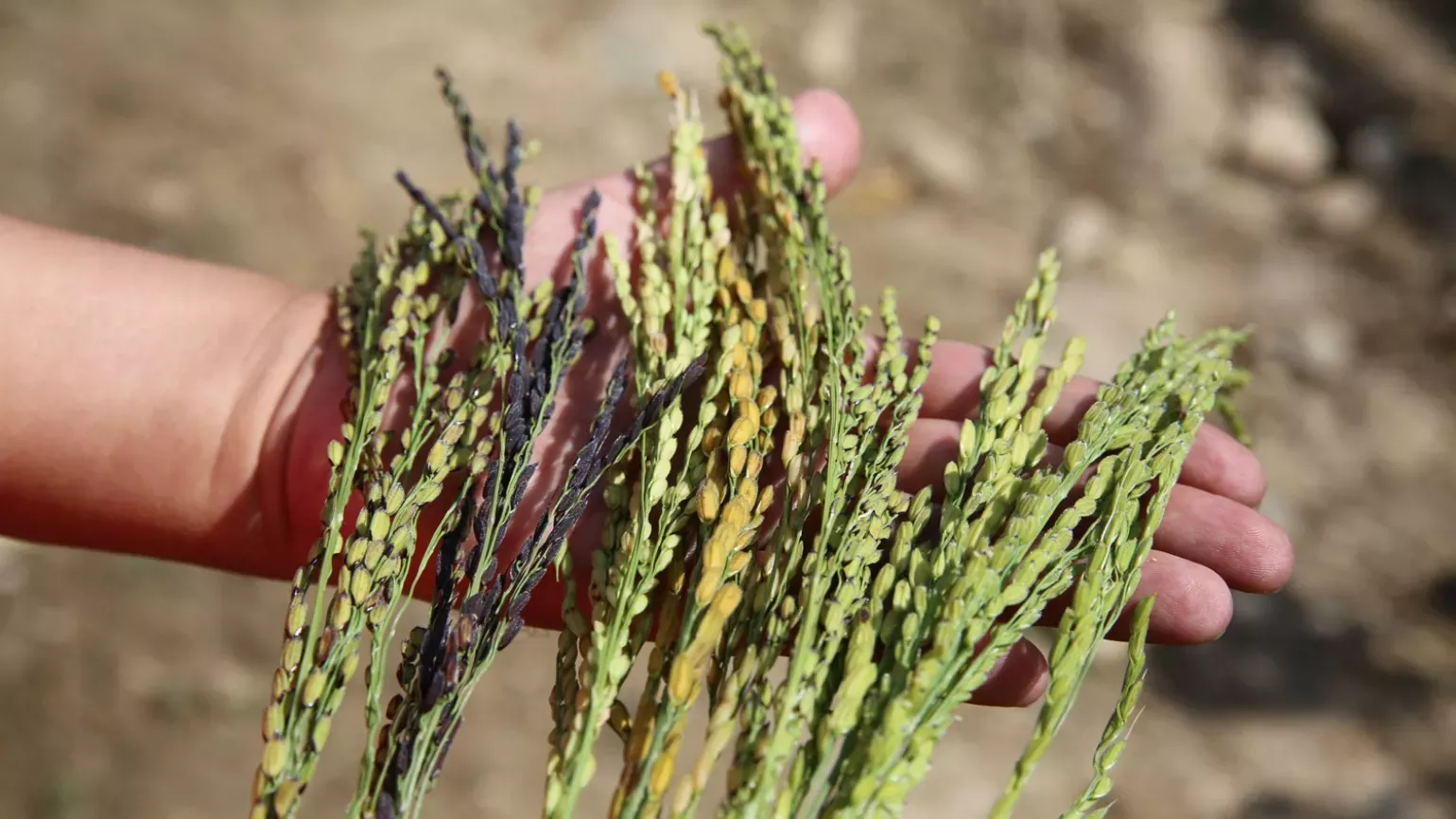
Partners for success
Every single one of our Crop Wild Relatives collecting partners, like the Nepal Agricultural Research Council, are crucial to the success of the global effort to combat the effects of climate change on our food security.
Joining our partners on collecting trips like this provides real insight into not only the issues and challenges that they may be faced with in the field, but also the level of commitment they have invested to make high quality seed collections.
Acknowledgements
The Crop Wild Relatives project was made possible by funding from the Government of Norway.


